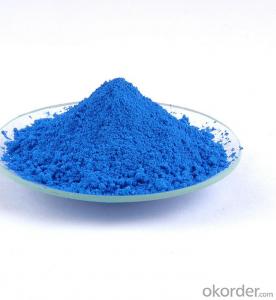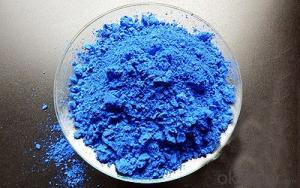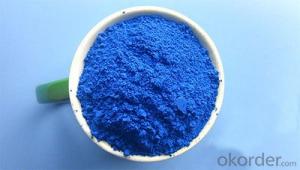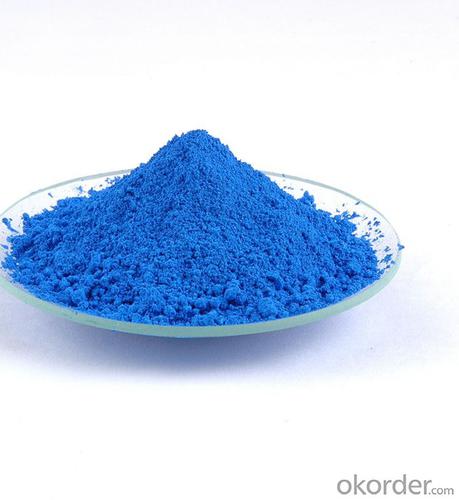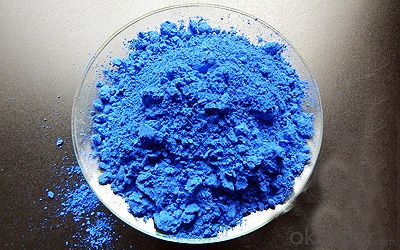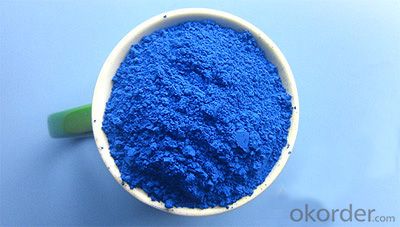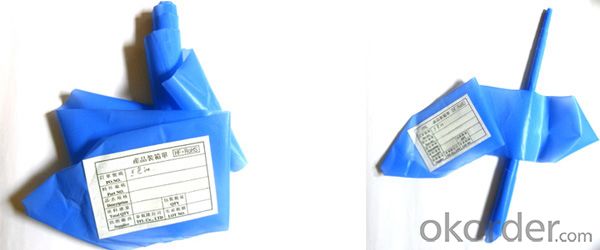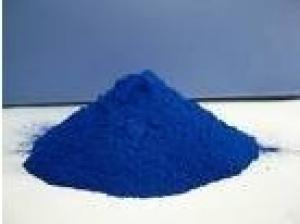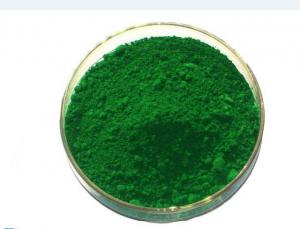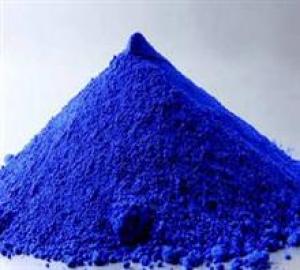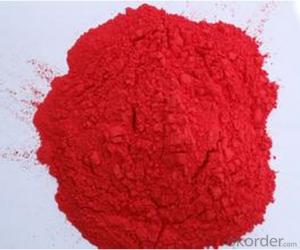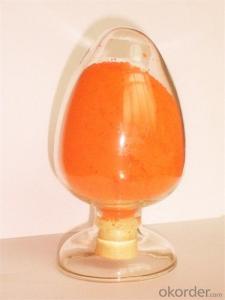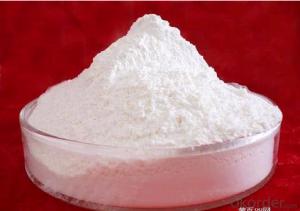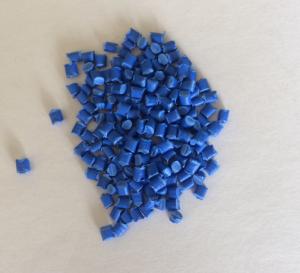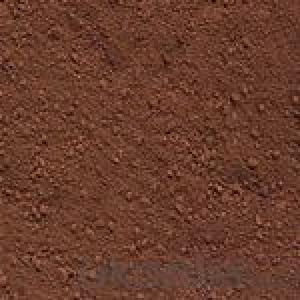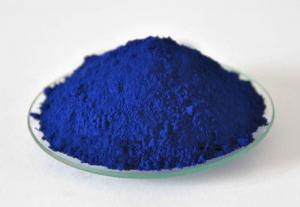Cadmium Blue Acid Resistant Pigment Nanotmeter
- Loading Port:
- Tianjin
- Payment Terms:
- TT OR LC
- Min Order Qty:
- 500 kg
- Supply Capability:
- 6000000 kg/month
OKorder Service Pledge
OKorder Financial Service
You Might Also Like
Specifications of Cadmium Bule:
PB28 Cobalt Blue Acid Resistant Pigment
- High temperature pigment
- Non-toxic pigments
- Anti-far-infrared function
CNBM is one of the biggest inorganic pigments manufacturer in china, specialized in producing mixed metal oxide pigments with the advantages of Acid Resistance, High Temperature Resistance, Excellent Tinting Strength, Easy to be dispersed.
Descriptions of PB28 Cobalt Blue Acid Resistant Pigment :
Cobalt Aluminate Blue Spinel, Pigment Blue 28, high temperature resistant pigment, cadmium bule is a bright color with reddish blue, which has a special anti-far-infrared function. Cadmium bule is also one kind of environmental protection pigments, which is internationally recognized as non-toxic pigments. It is easy to disperse, with excellent heat resistance, weather resistance, acid & alkali resistance, and resist to a variety of solvents, good hiding power.
Chemical Name: Cobalt Aluminate Blue Spinel
Chemical Composition: Co/Al Oxide
Color Index Name: Pigment Blue 28 / P.B.28
Color Index Number: 77346
CAS Number: 1345-16-0
Physical Form: Blue Powder
Crystal Pattern: Spinel Pattern
Cadmium Blue Technical Specifications:
Model No. | Particle Size (μm) ≤ | Heat Resistance (℃)≥ | Weather Resistance (Grade)1-5 | Lightfastness (Grade) 1-8 | Acid Resistance (Grade) 1-5 | Alkali Resistance (Grade) 1-5 | Oil Absorption g/100g | Density g/cm3 | PH |
JF-B2805 | 2.5 | 1200 | 5 | 8 | 5 | 5 | 28-37 | 3.8-5.4 | 6-9 |
Cadmium Blue Regulations:
EU RoHS Directive 2002/95/EC | Compliant |
EN71Part 3:1994 (A1:2000/AC2002) | Compliant |
US FDA 21 CFR 177.1520 | Compliant |
ASTM F963-08 (Clause 4.3.5) | Compliant |
REACH | Compliant |
Cadmium Blue Applications:
Cadmium Blue is mainly used in high temperature (resistant) coatings, ceramics, enamels, glass coloring, coloring of high temperature resistance engineering plastics,food contact plastics,as well as art paint.
Model with A, B represent fine type and standard type respectively.

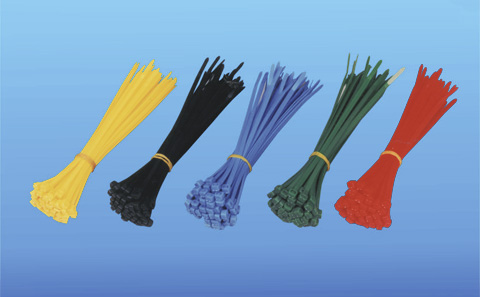
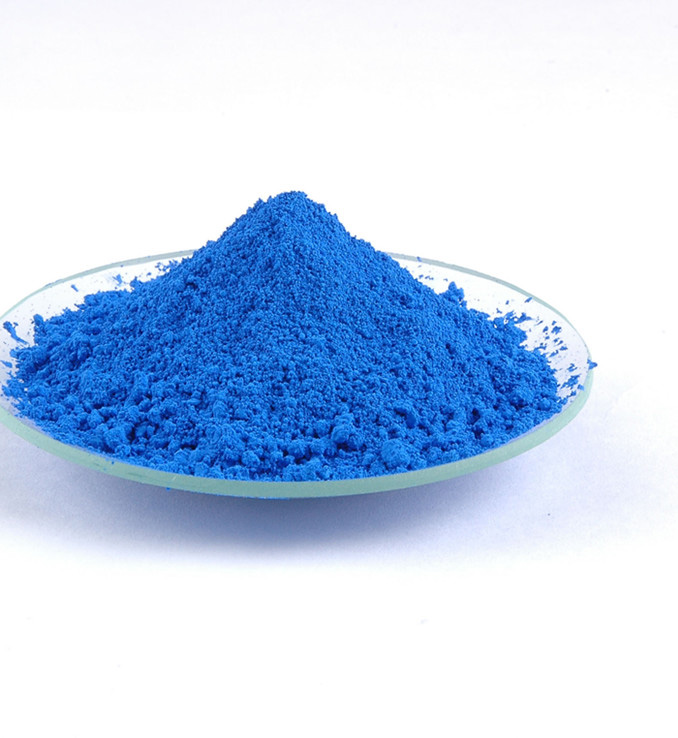
- Q: What does the word pigment mean?
- meant to be a pig. :)
- Q: Does anyone know its chemical formula or constituents ?
- Epona's answer is extremely sturdy. in case you seem up colour institutions you will locate diverse institutions reckoning on who has written them and what structures they're drawing from. yet you'll be able to desire to continually use institutions that make experience to you. case in point - you will in all probability locate that easy blue is the colour linked with peace. yet reckoning on what form of peace you're going for you may go with a diverse colour. possibly purple if that is for peace in the kin or with acquaintances, pink if that is religious in nature, or eco-friendly if that is physique appropriate. The institutions I genuinely tend to circulate with are: pink - lust, action, means, braveness Orange - creativity, braveness, means (extra innovative form than the pink). Yellow - issues bearing on the concepts (like possibly you have have been given a attempt to earnings for) or psychological suggestion. easy eco-friendly - prosperity darkish eco-friendly - therapeutic easy Blue - peace, tranquility darkish Blue - desires, on occasion suggestion pink - issues coping with the religious White - purification and can be a stand in for extremely just about something Black - liberating negativity, banishing purple - love, friendship, kin i do no longer think there is any colour that would desire to be prevented. yet I often use a diverse affiliation than what i've got listed. And my institutions are in user-friendly terms valid for yet somebody else in the event that they make experience to them. i exploit white candles maximum many times as I continually have them handy and that they might continually be spiced up with diverse oils this is something I do very often.
- Q: What are iridescent magnetic effect pigments?
- Iridescent okorder /... (really long explanation)
- Q: Compare and contrast pigment color with the color seen from a light. What is the difference between mixing pigment colors and mixing light colors?
- you notice pigments the colour you notice them, using fact they replicate a spectra of sunshine, with particular frequencies, and take up all others seen to the human eye. in case you combine distinctive monochromatic mild with distinctive colours (as seen on the television: purple, green and blue it quite is referred to as additive mixing, or magenta, yellow and cyanide that's the different technique) your retina will upload the colors up, and experience it as a distinctive shade. (by skill of including each and all of the three colours on an identical intensity, you are able to create white mild) while mixing pigments (they are chemical compounds) you get a clean cloth, which will replicate an different spectra of sunshine, which you will see as a shade
- Q: wut is the diff between those 2?
- pigments are a bright shimmery loose powder eyeshadows arent too shimmery but its pressed powder
- Q: (After the fifteenth century)
- Pigment is color in powder form. An example is lamp black; it was first made from the soot of kerosene lamps ground fine. Binder is a substance used to hold pigment together and make it adhere; in the previous example, linseed oil would be the binder for the lamp black pigment. Vehicle is a medium acting as a solvent, carrier, or binder for paint; turpentine or mineral spirits would be a vehicle but so would linseed oil as well to help dilute the paint and help it cover a large area. Hope that helps and thanx.
- Q: Can someone describe the role of accessory pigments in photosynthesis?
- Accessory Pigments In Plants
- Q: i bought the new neon pro pigments from mac , well 5 out of the six and i also bought 'basic red'i want to use these as eye shadows but i dont know howi also bought mac mixing medium for face and body but lol , i dont know how to use any of this stuffwhat can i do to use this stuff i mean will it turn out like regular eyeshadow if i use it right? will there be a shine to it? it will reduce fall out? should i put the mixing medium on my eye first , then let dry?do i need to possibly press the pigments in a pot with some kind of eye shadow liquid?i also bought the mascara mixing medium but want to know exactly what to do with thatand also , can i mix any of the pigments with lipgloss?http://cn1.kaboodle /hi/img/2/0/0/119/a/AAAAAlrx1LUAAAAAARmgiA.jpg
- look on youtube they have all the answers!
- Q: what are accessory pigments?
- Accessory pigments are light-absorbing compounds, found in photosynthetic organisms, that work in conjunction with chlorophyll a. They include other forms of this pigment, such as chlorophyll b in green algal and higher plant , while other algae may contain chlorophyll c or d. In addition, there are many non-chlorophyll accessory pigments, such as carotenoids or phycobiliproteins which also absorb light and transfer that light energy to photosystem chlorophyll. Some of these accessory pigments, particularly the carotenoids, also serve to absorb and dissipate excess light energy, or work as antioxidants. The different chlorophyll and non-chlorophyll pigments associated with the photosystems all have different absorption spectra, either because the spectra of the different chlorophyll pigments are modified by their local protein environment, or because the accessory pigments have intrinsic structural differences. The result is that, in vivo a composite absorption spectrum of all these pigments is broadened and flattened such that a wider range of visible and infrared radiation is absorbed by plants and algae. Most photosynthetic organisms do not absorb green light well, thus most remaining light under leaf canopies in forests or under water with abundant plankton is green, a spectral effect called the green window. Organisms such as some cyanobacteria and red algae contain accessory phycobiliproteins that absorb green light reaching these habitats. For more kindly click on the links below --- en.wikipedia.org/wiki/Accessory_p... en.wikipedia.org/wiki/Photosynthe...
- Q: what is one reason why plants have accessory pigment molecules like chlorophyll b and carotenoids?
- Pigments in plant biology are actually (as you may know) long-chain conjugated systems which absorb light at specific frequencies. This specificity is largely due to the morphological and physical features of each pigment molecule. Since Chlorophyll a only absorbs well at wavelengths of about 400-450 nm and 650-700 nm a plant empowered with only this photosynthetic molecule would have an extremely limited range of spectral absorption. This is where the accessory pigments come in. Chlorophyll b's absorption peaks at 450-500 nm and 600-650 nm and Xanthophyll's at around 400-530 nm, allowing for a much wider absorption range. Carotenes contribute to photosynthesis by transmitting the light energy they absorb from chlorophyll back into the energetic system. None of the pigments, absorb well in the green-yellow region which is largely responsible for the abundance of greens we see throughout nature. The five main pigments are: Chlorophyll a - a blue-green pigment Chlorophyll b - a yellow-green pigment Carotene - an orange pigment Xanthophyll - a yellow pigment Phaeophytin a - a gray-brown pigment Phaeophytin b - a yellow-brown pigment A good illustration of this concept can be found in this graph of Photosynthetically Active Radiation, illustrating the absorption peaks of all the molecules: upload.wikimedia.org/wikipedia/co...
Send your message to us
Cadmium Blue Acid Resistant Pigment Nanotmeter
- Loading Port:
- Tianjin
- Payment Terms:
- TT OR LC
- Min Order Qty:
- 500 kg
- Supply Capability:
- 6000000 kg/month
OKorder Service Pledge
OKorder Financial Service
Similar products
Hot products
Hot Searches
Related keywords
